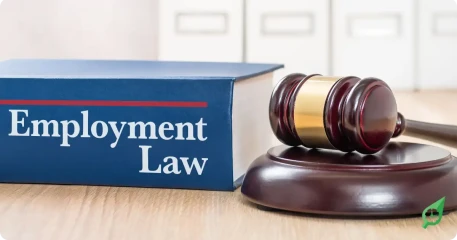Team building is not just a corporate buzzword; it's a strategic approach to enhance organisational productivity and employee satisfaction. Studies show that well-designed team-building activities boost morale and improve communication. Dive into our curated list of 15 quick yet highly effective team-building activities and games tailored to energize and unite teams across any industry.
Team-building games are a great way to connect your team and work together.
Whether your team is virtual or in the office, doing activities together can lead to a more productive day. We have found that a 15-minute team-building activity at the start of the day gets everyone moving, thinking, and working together. A perfect start to a productive day!
It is essential to choose suitable team-building activities and avoid the same old “ice breaker” type of activities that are more of a demotivation than a stimulating one. With this in mind, we have compiled a list of the 15 best Team Building Activities you can run from start to finish in 20 minutes or less.
You will quickly find this is the best way to start the day of the week with your team.
So, whether you own a coffee shop, bar, aged care facility, office, or digital business, here are the best activities to help bring your team together.

1) Problematic Building Blocks - A Creative Team Problem-Solving Game
Objective:
- Enhance creative problem-solving and collaborative brainstorming.
Materials Needed:
- Large paper sheets.
- Coloured markers for each team member.
Instructions:
- Problem Presentation: Start by introducing a fictional or real problem relevant to your business.
- Idea Generation: Each team member writes a quick solution or idea on a large sheet of paper.
- Idea Exchange: Pass the paper to the right, each person adding to or building upon the previous idea.
- Round-Robin Collaboration: Continue the process for several rounds to expand the brainstorming.
- Solution Workshop: Gather and discuss all ideas and solutions as a team, evaluating their effectiveness and creativity.
Expected Outcome:
- This activity promotes a collaborative environment where each team member’s input is valued. It encourages creative thinking and demonstrates the power of collective problem-solving.

2) Two Truths, One Lie
Objective:
- Foster team bonding and learn exciting facts about team members.
Materials Needed:
- Strips of paper.
- Pens.
Instructions:
- Preparation: Each team member writes two truths and one lie about themselves on separate slips of paper.
- Guessing Game: Mix up the slips, then team members guess which statement is a lie among the truths read aloud.
- Revelation: Reveal the actual truths and lies and discuss.
Expected Outcome:
- Enhances understanding of team members, breaks the ice, and encourages open communication.

3) Stick it, Make it, Glue it, Break it
Objective:
- Improve team problem-solving and creativity under pressure.
Materials Needed:
- Assorted craft items (e.g., sticks, tape, cardboard, markers).
Instructions:
- Team Division: Divide into groups of approximately five members.
- Idea Generation: Each group picks an item to create from the craft materials.
- Creation Challenge: Teams have a set time to build their item using only the materials provided.
- Presentation: Each team presents their creation.
Expected Outcome:
- Promotes creativity, time management, and collaborative problem-solving skills.
4) The Un-Common Book
Objective:
- Build a positive team culture and record team memories.
Materials Needed:
- Large book with blank pages.
- Pens, sticky tape, glue.
Instructions:
- Regular Entries: Team members write quotes, events, or positive encounters at work in the book.
- Collaborative Effort: Decide on weekly themes or topics for book entries.
- Ongoing Activity: Keep the book in a common area for ongoing contributions.
Expected Outcome:
- Encourages team bonding and creates a lasting record of team culture and achievements.
5) Show and Tell
Objective:
- Enhance public speaking skills and team updates.
Materials Needed:
- A box of random office trinkets or items.
Instructions:
- Random Selection: Team members pick an item from the box without looking.
- Presentation Challenge: Present the item as a treasure, then discuss a current work project.
- Regular Sessions: Hold sessions regularly for ongoing team engagement.
Expected Outcome:
- Improves public speaking and presentation skills and keeps the team updated on current projects.

6) Ad Lib Mission Statement
Objective:
- Foster understanding and engagement with the company's mission statement.
Materials Needed:
- Whiteboard.
- Markers.
- Paper.
Instructions:
- Mission Modification: Write the company’s mission statement on the board, replacing keywords with blanks.
- Creative Reinterpretation: Divide into teams. Each team rewrites the mission statement, filling in the blanks with their own words.
- Group Presentation: Teams share their versions and discuss the variations.
Expected Outcome:
- Encourages creative thinking and a deeper understanding of the company's core values and mission.

7) The Invisible Picture
Objective:
- Enhance communication skills and team coordination.
Materials Needed:
- Paper.
- Pencils/Markers.
- Collection of pictures.
Instructions:
- Descriptive Challenge: One team member describes a picture without revealing what it is.
- Drawing Interpretation: Others draw based on the description.
- Comparison and Discussion: Compare drawings and discuss the interpretation variations.
Expected Outcome:
- It highlights the importance of clear communication and shows how different interpretations can arise from the same instructions.
8) Wait... Who Am I?
Objective:
- Break stereotypes and enhance team bonding.
Materials Needed:
- Name tag stickers.
- Markers.
Instructions:
- Role Assignment: Write down various roles or stereotypes on name tags and stick them on team members' backs.
- Guessing Game: Team members ask questions to guess the role on their back.
- Interaction Based on Stereotypes: Interact based on the stereotypes for a set duration.
Expected Outcome:
- Promotes understanding of how stereotypes affect perceptions and interactions.
9) Fire Sale!
Objective:
- Enhance creativity and sales skills.
Materials Needed:
- An item from each person’s desk.
Instructions:
- Product Creation: Each team member chooses an item from their desk and develops a product idea around it.
- Sales Pitch Development: Create a name, logo, slogan, and a 60-second sales pitch for the product.
- Presentation: Team members present their product to the group.
- Group Evaluation: Discuss which products were sold successfully and why.
Expected Outcome:
- Encourages creativity, quick thinking, and persuasive sales skills.
10) Rapid Interview
Objective:
- Develop insightful questioning and quick thinking.
Materials Needed:
- Pens and paper.
Instructions:
- Scenario Setting: Create several job-related scenarios.
- Question Formulation: Teams develop three interview questions for each scenario.
- Presentation and Discussion: Share and discuss the questions, understanding the thought process behind them.
Expected Outcome:
- Enhances understanding of important job qualities and fosters strategic questioning skills.
11) Group It!
Objective:
- Encourage creative thinking and teamwork.
Materials Needed:
- Random items from across the office.
Instructions:
- Item Collection: Gather various objects and place them centrally.
- Team Division and Classification: Teams categorize objects into chosen categories.
- Explanation and Discussion: Teams explain their categorization logic.
Expected Outcome:
- Promotes out-of-the-box thinking and teamwork in categorizing diverse items.
12) Making Problems
Objective:
- Foster creative challenge creation and problem-solving.
Materials Needed:
- Paper, pens, markers.
Instructions:
- Challenge Design: Teams create a problem-solving challenge.
- Team Participation: Each team attempts to solve another team's challenge.
- Rotation and Repeat: Continue rotating challenges for maximum engagement.
Expected Outcome:
- Encourages creative thinking and gives team members a role in leading problem-solving efforts.
13) Talk, Listen, Observe
Objective:
- Enhance communication skills and active listening.
Materials Needed:
- Paper, pens.
Instructions:
- Role Assignment: Divide the team into three groups, assigning talker, listener, and watcher roles.
- Topic Discussion: Discuss current events or business topics for the talker.
- Active Engagement: The listener practices active listening and asks a question at the end while the watcher observes the interaction.
- Role Rotation and Group Discussion: Rotate roles and repeat with new topics, then discuss what was learned as a group.
Expected Outcome:
- Improves communication and active listening skills and demonstrates the importance of non-verbal cues.

14) Describe and Draw
Objective:
- Demonstrate communication breakdowns and interpretation differences.
Materials Needed:
- Paper, pens, pencils, markers.
Instructions:
- Initial Drawing: Each team member draws a simple image and passes the paper to their right.
- Description Writing: The next person writes down what they think the image is, then folds the paper to hide the drawing.
- Alternating Rounds: Continue alternating between drawing and describing, only revealing the immediate predecessor’s input.
- Final Reveal and Discussion: Share the final interpretations with the original drawings.
Expected Outcome:
- Highlights how communication can be misinterpreted and the importance of clear instructions.
15) The Problem Tree
Objective:
- Identify and analyze root causes of workplace issues.
Materials Needed:
- Large sheets of paper, pens.
Instructions:
- Problem Identification: Teams write a workplace problem at the top of the sheet.
- Cause Analysis: Below the problem, teams list two leading causes, then delve into underlying causes for each, forming a tree-like structure.
- Group Presentation and Discussion: Each team presents their Problem Tree, followed by group discussion and brainstorming of potential solutions.
Expected Outcome:
- Encourages analytical thinking and problem-solving, fostering a deeper understanding of workplace issues.
Team Building Games for Everyone
Bringing everyone together in a productive way can be challenging. With a natural desire to avoid “hammy” team-building activities, getting people in and interested is hard. With these genuine activities, your team can practice working together, problem-solving, and leadership skills.
Afterwards, employees will leave feeling energised with a fresh perspective on their teammates and how to solve day-to-day problems in their role.
Enhance your team's synergy with our comprehensive guide on Team Building Activities.
Download your free PDF now for easy access to innovative and engaging team-building games and activities ideally suited for any workplace environment. Elevate your team management with RosterElf's Online Rostering System. Our suite of Free HR Tools streamlines staff scheduling and payroll processes, making team coordination seamless and efficient. Experience the full potential of RosterElf with a no-risk 15-day free trial and witness firsthand how it can transform your team's productivity and cohesion.













